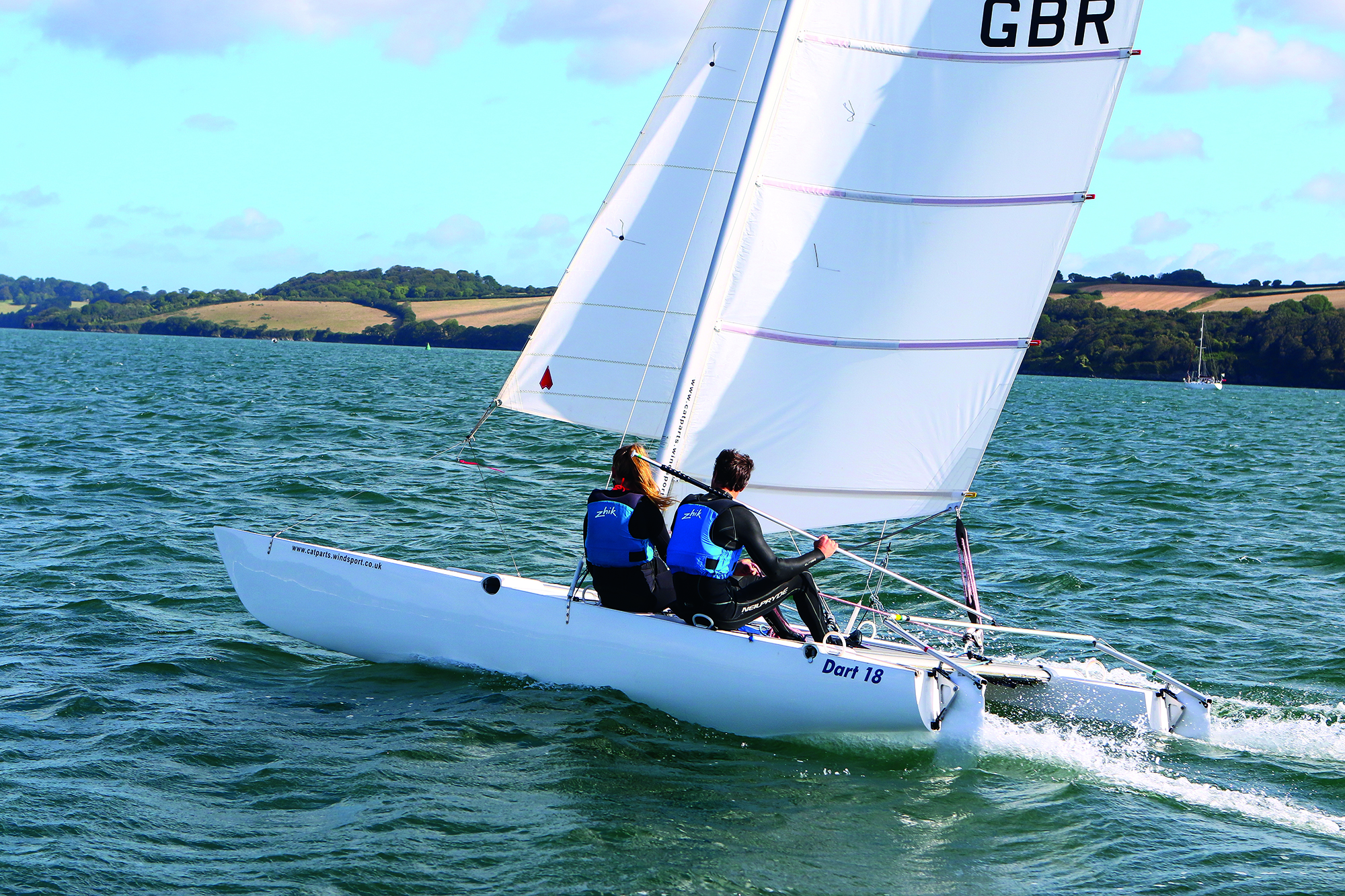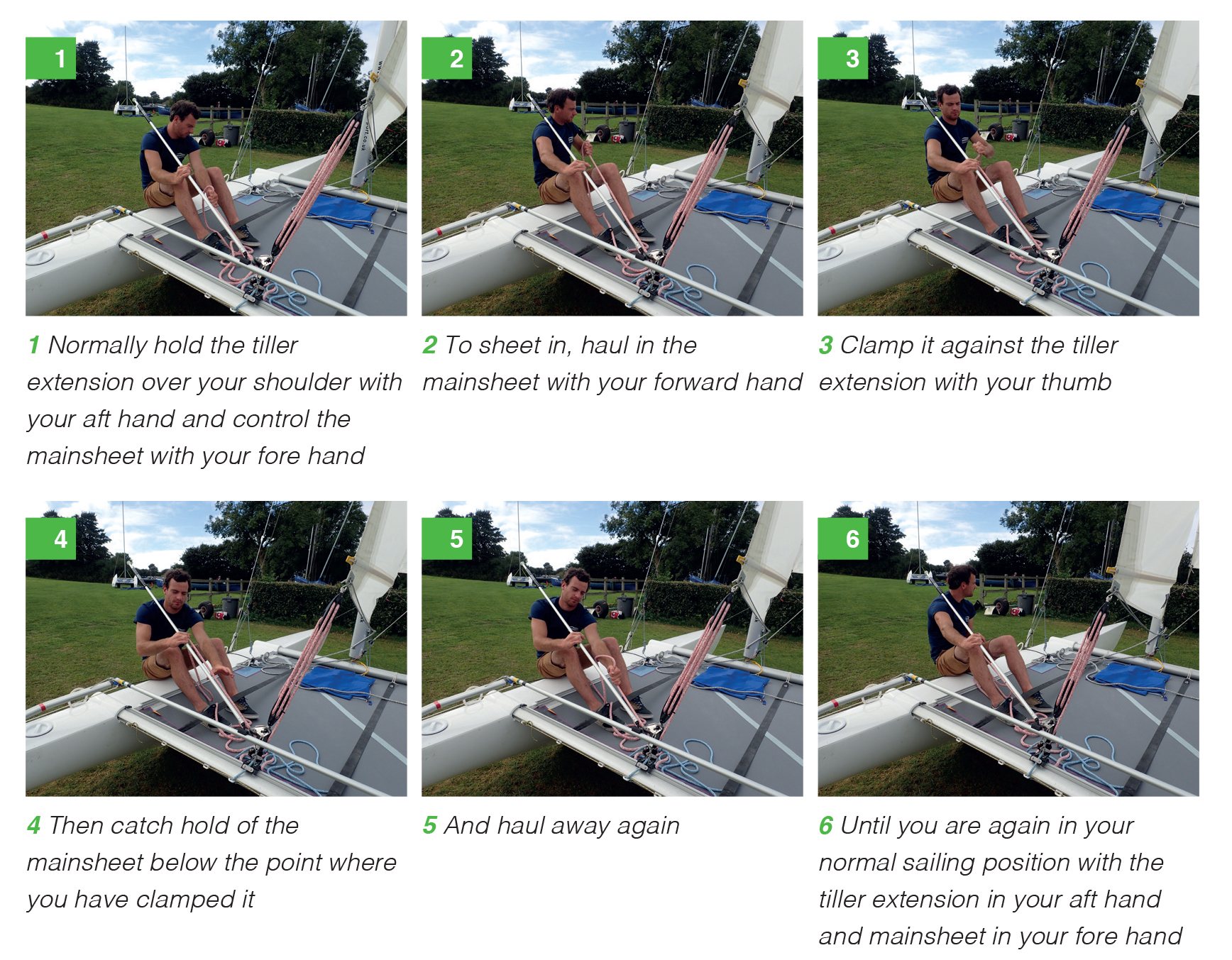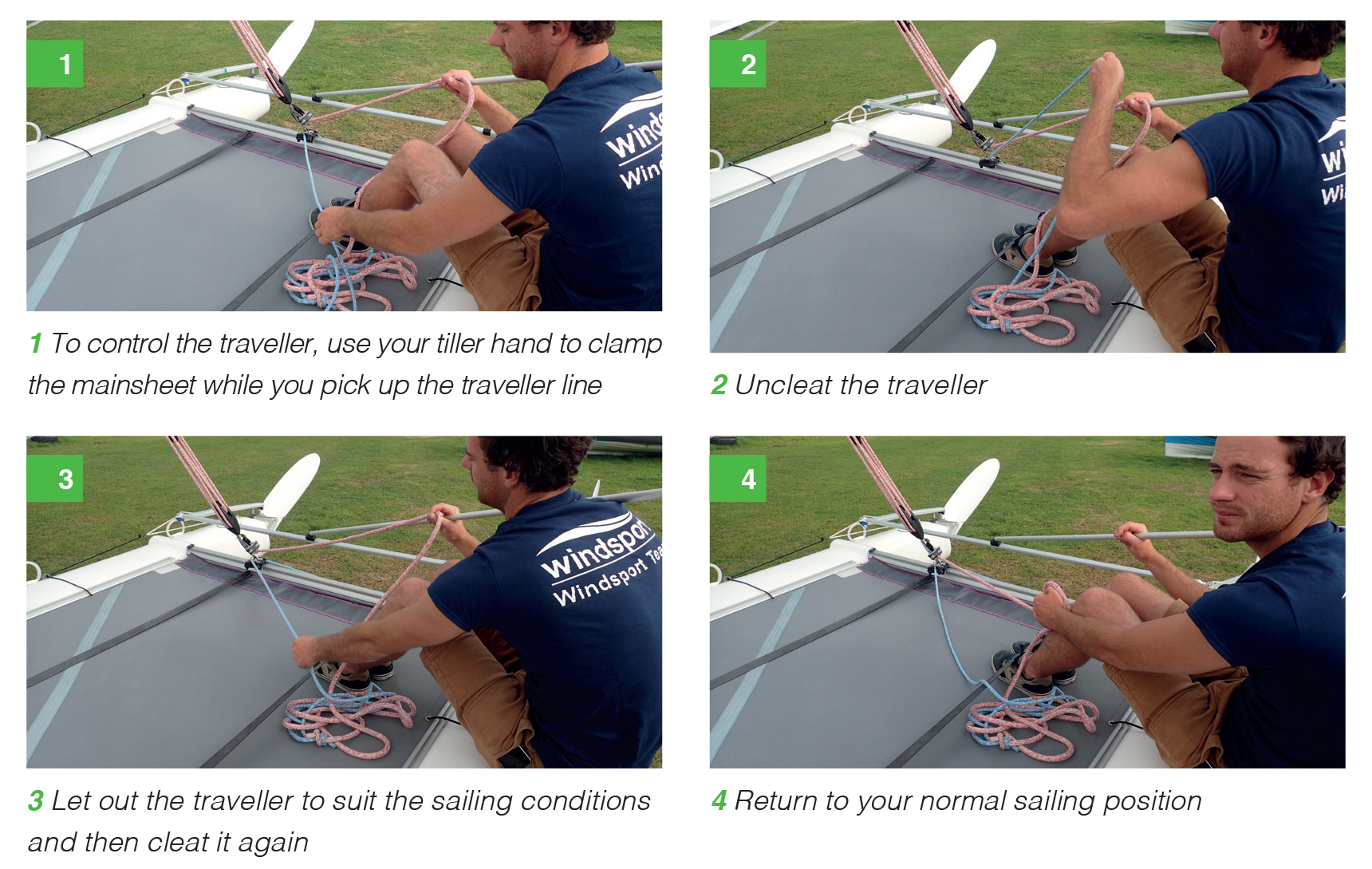Introduction To C.A.T. With Tom Phipps
Book Extract
KEY ASPECTS
A good way of remembering what you need to think about when sailing a catamaran is C.A.T.
C Crew weight – position around the catamaran, fore and aft, inboard and outboard.
A Airflow – the position of the sails to give optimum performance.
T Technique – how best to sail the cat given the sea, wind, tides and movements of other craft.
C.A.T. is relevant to all points of sailing and worth remembering when you are on the water. Whether you are a novice cat sailor or racing guru, when you get C.A.T. right you will be sailing fast!
CREW WEIGHT
Look to keep the hulls ‘tuned’ correctly fore-and-aft by moving your weight to keep the hulls parallel to the water. Lean in or out and trim the sheets to keep the windward hull just kissing the water. Good hull and sail trim will give the catamaran a good turn of speed and make it easy to control.

Try to keep the windward hull kissing the water

Airflow as shown by telltales
AIRFLOW
When setting the sails, pull them in to prevent the sails flapping, then ‘fine tune’ using the telltales. Telltales, sometimes called woollies or sail streamers, are simply threads of wool or thin strips of spinnaker sailcloth, attached to the sails to show clearly the effect of the air passing over them. Their job is to help the helm or crew read the airflow over the sails more clearly. The telltales on both sides of each sail should constantly stream backwards, demonstrating a smooth passage of air over both surfaces.
If the leeward telltale starts to fall or circle, the air flowing over this side of the sail is disturbed and the sail should be eased out. If the windward telltale stalls the sail should be pulled in to smooth the airflow.
In the case of the mainsail, you should start by adjusting the mainsheet to make the top set of telltales react correctly. As you improve you will be able to make the majority of lower telltales flow correctly too by using the mainsheet, downhaul, batten tension and traveller position. The jib can also be sheeted for maximum efficiency using its own telltales as a guide: again, they should be streaming both sides.
TECHNIQUE
This covers everything else, from where you steer, where you position the centreboards and so on.
Controlling The Tiller & Mainsheet
It is a good idea to practise controlling the tiller and mainsheet on land and get into the right habits.
In Light & Medium Winds

In Stronger Winds

Adjusting The Tiller

© Not to be reproduced without written permission from Fernhurst Books Limited.
The Catamaran Book is written by Tom Phipps and Brian Phipps. Tom has succeeded in a number of national, European and world championships. Brian has been involved in the world of sports catamarans for over 30 years and is a coach and advisor to a number of national sailing teams.